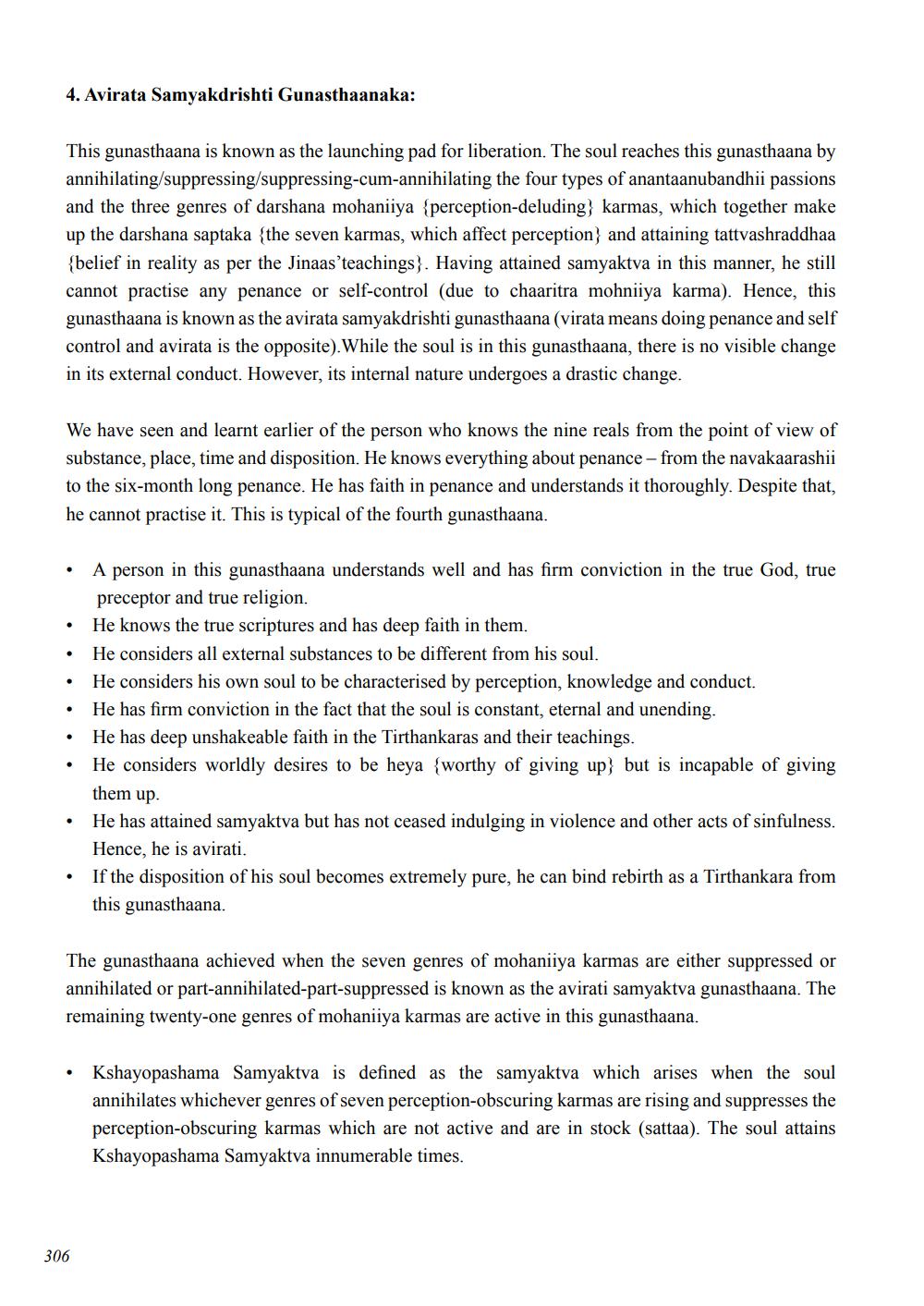________________
4. Avirata Samyakdrishti Gunasthaanaka:
This gunasthaana is known as the launching pad for liberation. The soul reaches this gunasthaana by annihilating/suppressing/suppressing-cum-annihilating the four types of anantaanubandhii passions and the three genres of darshana mohaniiya (perception-deluding) karmas, which together make up the darshana saptaka (the seven karmas, which affect perception) and attaining tattvashraddhaa (belief in reality as per the Jinaas'teachings). Having attained samyaktva in this manner, he still cannot practise any penance or self-control (due to chaaritra mohniiya karma). Hence, this gunasthaana is known as the avirata samyakdrishti gunasthaana (virata means doing penance and self control and avirata is the opposite). While the soul is in this gunasthaana, there is no visible change in its external conduct. However, its internal nature undergoes a drastic change.
We have seen and learnt earlier of the person who knows the nine reals from the point of view of substance, place, time and disposition. He knows everything about penance - from the navakaarashii to the six-month long penance. He has faith in penance and understands it thoroughly. Despite that, he cannot practise it. This is typical of the fourth gunasthaana.
.
•
.
•
•
A person in this gunasthaana understands well and has firm conviction in the true God, true preceptor and true religion.
306
He knows the true scriptures and has deep faith in them.
He considers all external substances to be different from his soul.
He considers his own soul to be characterised by perception, knowledge and conduct.
He has firm conviction in the fact that the soul is constant, eternal and unending.
He has deep unshakeable faith in the Tirthankaras and their teachings.
He considers worldly desires to be heya (worthy of giving up) but is incapable of giving them up.
He has attained samyaktva but has not ceased indulging in violence and other acts of sinfulness. Hence, he is avirati.
If the disposition of his soul becomes extremely pure, he can bind rebirth as a Tirthankara from this gunasthaana.
The gunasthaana achieved when the seven genres of mohaniiya karmas are either suppressed or annihilated or part-annihilated-part-suppressed is known as the avirati samyaktva gunasthaana. The remaining twenty-one genres of mohaniiya karmas are active in this gunasthaana.
Kshayopashama Samyaktva is defined as the samyaktva which arises when the soul annihilates whichever genres of seven perception-obscuring karmas are rising and suppresses the perception-obscuring karmas which are not active and are in stock (sattaa). The soul attains Kshayopashama Samyaktva innumerable times.




